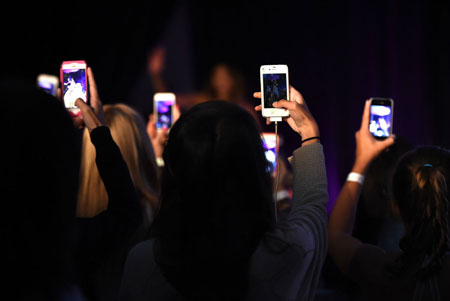Interesting piece in The New Yorker about the photography blues hardly anyone realizes. Titled “In the Future, We Photograph Everything and Look at Nothing,” the democratization of photography is lamented in a way that something doesn’t seem to exist anymore if it doesn’t exist to end in a photograph. That’s a Susan Sontag quote from her seminal book On Photography, a book published in 1977 when digital photography wasn’t even a vision of the future. And how right Sontag was. As our relationship with photography shifts, photography reflects the reality of our shifting technologies.
Writes The New Yorker:
Sure, we all like listening to music on vinyl, but that doesn’t mean streaming music on Spotify is bad. Streaming just fits today’s world better. I love my paper and ink, but I see the benefits of the iPad and Apple Pencil. Digital photography is going through a similar change (…) Today we don’t even think twice about snapping a shot (…) We have come to a point in society where we are all taking too many photos and spending very little time looking at them.

Hardly any news, yet the definition of photography is changing, too, and becoming more of a language. We’re attaching imagery to tweets or text messages, almost like a period at the end of a sentence. It’s enhancing our communication in a whole new way.
Today we think of something, and then we Google it. Photos are evolving along the same path as well. Photos are less markers of memories than they are Web-browser bookmarks for our lives.
The article speculates what Google’s obvious want to kill the Nik Collection software has to do with all this. Not too long ago the photo editing plugins cost $500, now they cost nothing. Killing the software by giving it away for free won’t be followed by a PR nightmare. But make no mistake: it is only a matter of time before Nik goes the way of the film camera — into the dustbin of technological history.
While Google bets on quantity and the cloud. The New Yorker:
Google Photos, a service the company has fully committed to, is built to do just that — organize and enhance maddeningly large photo libraries. Upload your photos to Google’s Cloud and the program will sort through them, remove duplicates, pick out the best ones, tag them, build albums of your vacations, and create animated GIFs for you to share with others. The Assistant feature even edits your photos. The human just has to dump a lot of stuff in a pile; the machine takes care of the rest.
Incredible automation, all we have to do is press the shutter button as often and fast as we want, and Google takes care of everything we photograph. A nightmare for the purist in us, with The New Yorker wondering if, in the future, desktop photo editing will be like the film-photography revival of today:
A luxury to feed our nostalgia, a wistful effort to exercise human control over a task machines have taken over from us.
If Susan Sontag only would have known.
Read the whole article in The New Yorker.


